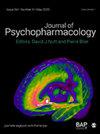Long-read sequencing of CYP2D6 may improve psychotropic prescribing and treatment outcomes: A systematic review and meta-analysis.
IF 4.5
3区 医学
Q1 CLINICAL NEUROLOGY
引用次数: 0
Abstract
BACKGROUND The enzyme expression (i.e. phenotype) of the Cytochrome P450 2D6 (CYP2D6) gene is highly relevant to the metabolism of psychotropic medications, and therefore to precision medicine (i.e. personalised prescribing). AIMS This review aims to assess the improvement in CYP2D6 phenotyping sensitivity (IPS) and accuracy (IPA) offered by long-read sequencing (LRS), a new genetic testing technology. METHODS Human DNA samples that underwent LRS genotyping of CYP2D6 in published, peer-reviewed clinical research were eligible for inclusion. A systematic literature search was conducted until 30 September 2023. CYP2D6 genotypes were translated into phenotypes using the international consensus method. IPS was the percentage of non-normal LRS CYP2D6 phenotypes undetectable with FDA-approved testing (AmpliChip). IPA was the percentage of LRS CYP2D6 phenotypes mischaracterised by non-LRS genetic tests (for samples with LRS and non-LRS data). RESULTS Six studies and 1411 samples were included. In a meta-analysis of four studies, IPS was 10% overall (95% CI = (2, 18); n = 1385), 20% amongst Oceanians (95% CI = (17, 23); n = 582) and 2% amongst Europeans (95% CI = (1, 4); n = 803). IPA was 4% in a large European cohort (95% CI = (2, 7); n = 567). When LRS was used selectively (e.g. for novel or complex CYP2D6 genotypes), very high figures were observed for IPS (e.g. 88%; 95% CI = (72, 100); n = 17; country = Japan) and IPA (e.g. 76%; 95% CI = (55, 98); n = 17; country = Japan). CONCLUSIONS LRS improves CYP2D6 phenotyping compared to established genetic tests, particularly amongst Oceanian and Japanese individuals, and those with novel or complex genotypes. LRS may therefore assist in optimising personalised prescribing of psychotropic medications. Further research is needed to determine associated clinical benefits, such as increased medication safety and efficacy.CYP2D6长读测序可改善精神药物处方和治疗效果:系统综述和荟萃分析。
背景细胞色素P450 2D6 (CYP2D6)基因的酶表达(即表型)与精神药物的代谢密切相关,因此也与精准医疗(即个性化处方)密切相关。目的本综述旨在评估长读测序(LRS)这一新型基因检测技术对 CYP2D6 表型灵敏度(IPS)和准确度(IPA)的改善情况。方法在已发表、经同行评审的临床研究中对 CYP2D6 进行 LRS 基因分型的人类 DNA 样本符合纳入条件。系统性文献检索截止到 2023 年 9 月 30 日。采用国际共识法将 CYP2D6 基因型转化为表型。IPS 是 FDA 批准的检测方法(AmpliChip)检测不到的非正常 LRS CYP2D6 表型的百分比。IPA 是指非 LRS 基因检测错误定性的 LRS CYP2D6 表型的百分比(针对具有 LRS 和非 LRS 数据的样本)。在四项研究的荟萃分析中,IPS 的总体比例为 10%(95% CI = (2, 18);n = 1385),大洋洲人中为 20%(95% CI = (17, 23);n = 582),欧洲人中为 2%(95% CI = (1, 4);n = 803)。在一个大型欧洲队列中,IPA的比例为4%(95% CI = (2, 7); n = 567)。当有选择性地使用 LRS 时(如用于新型或复杂的 CYP2D6 基因型),IPS(如 88%;95% CI = (72, 100);n = 17;国家 = 日本)和 IPA(如 76%;95% CI = (55, 98);n = 17;国家 = 日本)的数据都非常高。因此,LRS 可能有助于优化精神药物的个性化处方。还需要进一步的研究来确定相关的临床益处,如提高药物的安全性和有效性。
本文章由计算机程序翻译,如有差异,请以英文原文为准。
求助全文
约1分钟内获得全文
求助全文
来源期刊

Journal of Psychopharmacology
医学-精神病学
CiteScore
8.60
自引率
4.90%
发文量
126
审稿时长
3-8 weeks
期刊介绍:
The Journal of Psychopharmacology is a fully peer-reviewed, international journal that publishes original research and review articles on preclinical and clinical aspects of psychopharmacology. The journal provides an essential forum for researchers and practicing clinicians on the effects of drugs on animal and human behavior, and the mechanisms underlying these effects. The Journal of Psychopharmacology is truly international in scope and readership.
 求助内容:
求助内容: 应助结果提醒方式:
应助结果提醒方式:


